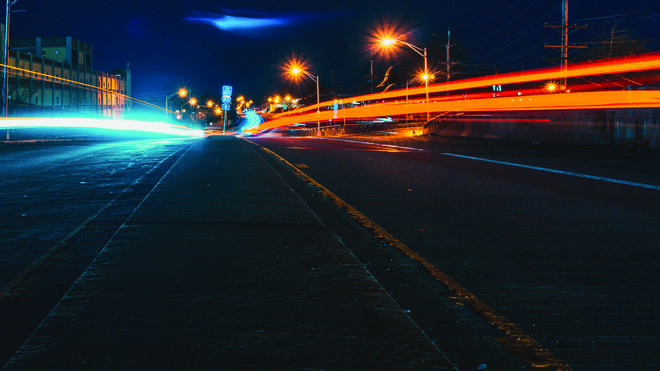Illuminating the Path to Public Safety: The Role of Smart Street Lighting

In pursuit of safer streets, lighting is imperative to reducing vehicle and pedestrian collisions and deterring criminal activity. The importance of lighting, however, extends beyond illumination. Smart lighting technology has revolutionized the way cities approach public safety, offering a multifaceted urban safety solution.
A Quantifiable Impact on Safety
Proper lighting improves driver visibility, reducing fatal midblock vehicle crashes by up to 50%. Standard streetlighting can be impacted by conditions like rain, fog, and snow and create lighting glare, further impairing visibility and potentially negating the safety benefits of streetlights. That’s why a smart lighting management system is essential: it ensures that LED street light fixtures are adjusted to the optimal level according to placement, time of day, prevailing weather and traffic conditions.
Download the Lighting Improves Safety Infographic
DOWNLOAD
A Powerful Public Safety Tool
The introduction of intelligent lighting controls has ushered in a new era of streetlights as a robust public safety solution. Technologies like UbiHub™ Public Safety Platform transform traditional streetlights into sophisticated nodes capable of supporting license plate recognition (LPR) technology and advanced street data analytics.
This integration of lighting with cutting-edge video analytics technology provides real-time insights into urban activities that city planners and law enforcement agencies can use to gain a comprehensive view of the urban landscape, enabling them to respond more effectively to incidents and plan urban development with safety in mind.
Shining a Light on Streetlights and Crime Prevention
Smart lighting has become a fundamental part of crime fighting initiatives. Criminal activity more frequently occurs in poorly lit areas, where perpetrators are less likely to be seen or caught on camera. Conversely, well-lit areas equipped with cameras can serve as a deterrent, reducing the likelihood of crimes being committed. A 2016 study in New York City's public housing developments revealed a staggering 36% reduction in nighttime outdoor index crime following the installation of additional lighting.
Smart lighting technology takes crime prevention a step further by enabling real-time adjustment of lighting levels and supporting license plate recognition (LPR) cameras. In the event of an incident, cities can remotely control lights equipped with cloud-based systems to illuminate the area, assisting emergency services in responding more efficiently, and review recorded footage to identify vehicles involved in crimes. This capability not only aids in the immediate resolution of incidents but also contributes to a broader strategy of crime prevention and public safety management.
Video cameras can also serve as a deterrent to crime, especially when cameras are visible. A 40-year study on the impact of CCTV cameras found that the technology was associated with a 13% reduction in crime, the effects were strongest in car parks, and cameras had the biggest impact when they were actively monitored.
Public Safety Innovation for Smart Cities
As urban areas continue to grow, smart lighting has emerged as an asset to maintaining public safety and security. By integrating advanced technologies with traditional infrastructure, smart streetlights are a model for smart city technology implementations. They demonstrate that even the humblest elements of our urban environment can play a significant role in shaping the future of public safety.

